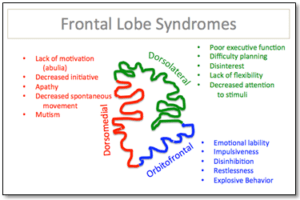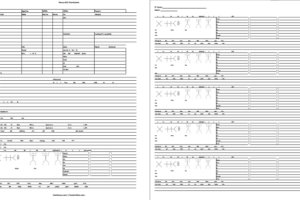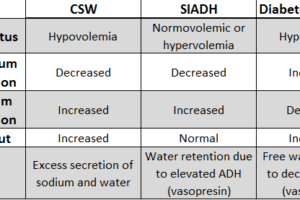The back derives its stability from what is called a functional spiral unit—2 adjacent vertebral bodies and the intervertebral disk. The term trijoint complex refers to a disk and 2 zygapophyseal joints at the same level. The process of degeneration of these units has been described as having three phases. Phase 1 involves circumferential tears or fissures in the outer annulus following repetitive microtrauma.
Phase 2 has been called the unstable phase. During this phase there is a progressive loss of mechanical integrity of the trijoint complex. The disc is subject to further tears, internal disruption, and resorption. This results in loss of disc height. The net result is segmental instability and often, disc herniation.
Phase 3 is also known as the stabilization phase. There is continued disk resorption, disk-space narrowing, endplate destruction, disk fibrosis, and osteophyte formation.
Patients with degenerative disc disease present with back pain, limited movement, symptoms that may have developed suddenly while lifting or stooping, loss of lumbar lordosis, protective scoliosis, pain in a leg and buttock, classic sciatica that may come days following an acute episode, pain that is worsened by coughing and straining, and paraesthesia or numbness in a leg or foot.
Basically, these symptoms are expressions of a triad of back pain, leg pain and weakness caused by the loss of the stability and flexibility of the functional spiral units, and the impingement of nerve roots as they exit the spinal canal by disc fragments, osteophytes and narrowing of nerve ostia.
Physical examination should begin with a general inspection. Does the patient prefer standing or sitting? What is the patient’s level of pain? Is the patient over-weight? Is the patient favoring a leg?
Then, attention should be turned to the lower lumbar region. Check for scars, kyphosis, scoliosis, and areas of tenderness. Paraspinals may be tender because of protective spasm. Check for a step deformity—where the spinous process juts ventrally. This is a sign of spondylolisthesis.
The lower extremity circumference at mid thigh and mid calf should be measured. Circumferences should be symmetric. Check for range of motion at hips, knees, and ankles. Lumbar ROM should be checked. The lower back is typically painful into flexion but sometimes also into extension. A full neurologic exam should be performed including pinprick throughout all dermatomes, full muscle strength throughout all myotomes, and reflexes. Straight leg raising should be performed in supine and seated positions. Foot dorsiflexion or bowstringing of the popliteal nerve will increase pain. Patients may also demonstrate “crossed sciatic tension”—sciatic pain in the affected leg on raising the unaffected leg.
MRI is the most commonly ordered imaging test in the evaluation of sciatica. It may be done even prior to plain films. MRI is very sensitive in visualizing lumbar disc herniations. Further, in re-operations, MRI can visualize the full extent of scar tissue.
CT myelography is used by some surgeons for patients before re-operation or for those with severely spondylotic changes. (CT scan myelography can delineate bony structures better than MRI.) The role of plain radiography is being debated because it is felt by some to be an extra cost and an extra radiation exposure that is unnecessary. However, plain radiographs with weight-bearing flexion and extension views are useful as an adjunct to other studies. Also, some spine tumors, instabilities, malalignments, and congenital anomalies can be identified best on plain films.
Unless a patient presents with cauda equina syndrome or profound motor deficits, medical treatment should be the initial mode of therapy. This mode of therapy begins with treatment quite similar to that for low back strain, LBP, aimed at reducing pain and spasm. Eventually it involves rehabilitation of muscles, advice about posture, and ergonomic evaluation.
Unlike LBP, the additional modality of epidural injections is available when nerve root involvement appears to be the primary pathology.
Surgical intervention is a greatly debated subject. Back surgery has grown into a virtual industry. Centers of excellence abound and serve as a significant means of income for many hospitals. While percutaneous discectomies are still performed, endoscopic techniques are gained in popularity. The community of surgeons with experience in their execution is also growing.
Alternative therapy such as thermal ablation is being explored, but the once touted of chemonucleolysis has been abandoned.
The consistent rule of thumb continues to be recognition that each patient represents a unique combination of factors that must be individually evaluated and treated based upon anatomy, physical condition, work requirements, life style, pain tolerance, and evidence of neurological deterioration. This is not a warm fuzzy declaration of intent. It is a crucial concept upon which successful treatment of lumbar disc disease must be based.



